Wild Potato, Solanum jamesii
$7.00
| Wild potato information and growing instructions |
| Solanum jamesii information and growing instructions |
| We classify true potato seeds as breeding seed; germination is not guaranteed |
| This product may produce plants with toxic levels of potato glycoalkaloids |
Solanum jamesii, the Four Corners Potato, is the only one of the approximately 100 species of wild potatoes that has a distribution primarily in the United States. It is one of only two wild potato species that occur naturally in the USA, the other being S. stoloniferum, a species that is more widespread in Mexico. The Four Corners Potato is found in the high desert of New Mexico, Arizona, Colorado, and Utah, also reaching slightly into Texas and Mexico. It was and still is, to some extent, used by native Americans and may have been an important food source at Mesa Verde. Tubers are very small – reaching about an inch at the most, but occasionally up to two inches for some accessions grown under cultivation. On average, plants produce about 100 tubers, ranging in size from a peppercorn to a grape, with a total yield of just over two ounces. Plants are smaller than domesticated potato plants, mostly less than a foot tall, and you can fit about four plants in the space normally required for a domesticated potato plant. I strongly recommend growing this plant in containers, since the small tubers and long stolons make for a challenging harvest. This species can easily become invasive.
I want to be clear that this is not a practical food plant. It is very interesting and fun to grow, but, realistically, you are going to put more energy into growing this plant than you are going to get out of it. If you want to feed yourself, grow a domesticated potato. If you want to nerd out on the biology, breeding, or history of this species and enjoy a small harvest of marginally edible tubers, you have the right idea. I don’t feel a need to provide a lot of warnings with other wild potatoes, since most people who buy them know what they are getting into, but people often come here following on news coverage of this plant. Remember that the media simplifies and sensationalizes everything and you shouldn’t make it your only source of information. News articles often report that this species will save the domesticated potato from climate change, become a major component of a healthy diet for native Americans, or be available in restaurants. The extent to which any of those claims is true is likely to be limited and far in the future. I am enthusiastic about all of those ideas, but I won’t hold my breath while waiting for them to be realized.
This species is not reliably edible and so you should proceed carefully if you intend to eat it. At minimum, take it slow and don’t feed it to young children. Reports that this species was traditionally eaten with clay suggest that at least some types have high glycoalkaloid content, which could cause gastrointestinal upset or more severe symptoms if you really overdo it. The majority of tubers that I taste have some sourness or bitterness, indicating higher glycoalkaloid content than domesticated potatoes. I frequently taste test large batches of tubers and it is not unusual that I experience a bitter aftertaste and mild burning sensation for hours afterward. You can read more about this at our Solanum jamesii profile page. I don’t think that there is a lot of danger, but I want to make sure that you take the time to read and understand what you are dealing with. This is not a domesticated potato and you should not consume it as carelessly as you would a potato from the grocery store. I eat much more bitter potatoes and I am still here, but I have a good understanding of the risk and probably a higher risk tolerance than many people.
Seeds and tubers from two different populations are available:
* The Wide population contains combined genetics from 35 accessions that were collected all over the range of this plant and is suitable for people who want the widest possible genetic base from which to make their own selections or to examine the full range of traits present in this species.
* The LPBSF population is my current breeding work and contains selections with at least one of the following traits: large tubers, palatable tubers, late blight resistance, short stolons, and heavy flowering, in order of priority. You will probably prefer the LPBSF population if you are interested in developing this species as a food crop. It is worth noting that the LPBSF population is also bound to contain inadvertent selection for traits suitable to my climate, which might make it less suitable for growing in the native range of S. jamesii.
The LPBSF population is OSSI open source, while the Wide population is public domain.
Seeds are a bit more expensive than domesticated potato seeds because the berries are so small. It is just more work to produce the same amount of seed. Tuber packets are filled from mixed bulk bins and so most will contain tubers from different plants, which means that they will be able to cross pollinate and produce seed. The larger the packet, the more certain this is. It isn’t completely inconceivable that I could fill a 5 tuber packet with 5 tubers from the same plant, although it isn’t likely. Note that tubers have such strong dormancy that you might have a hard time getting them to sprout in cool soil. If you chit them in a plastic bag in a warm spot, out of direct sunlight, they will sprout more uniformly. Unlike most of our offerings, tubers are often available year-round due to their strong dormancy.
Only logged in customers who have purchased this product may leave a review.

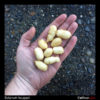
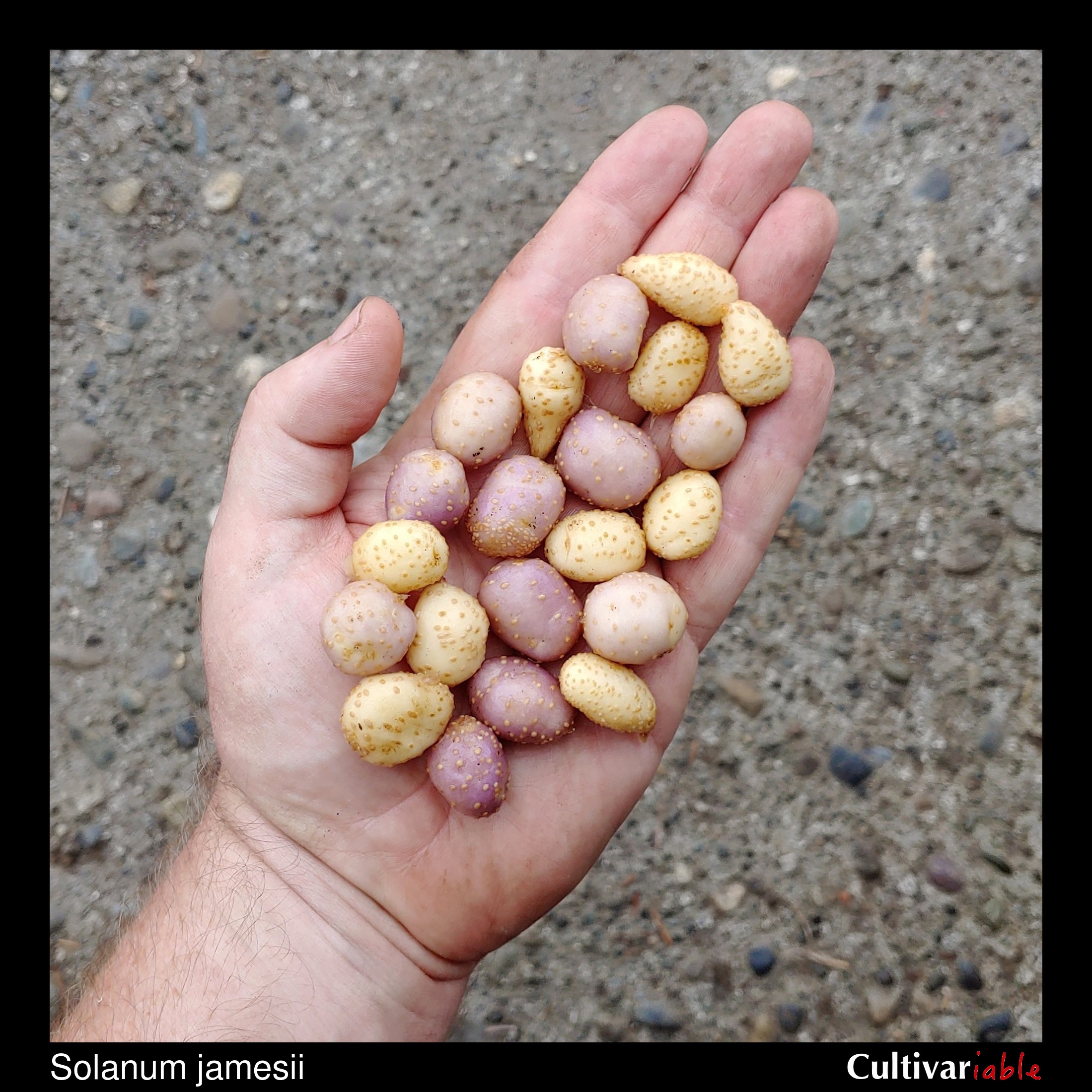
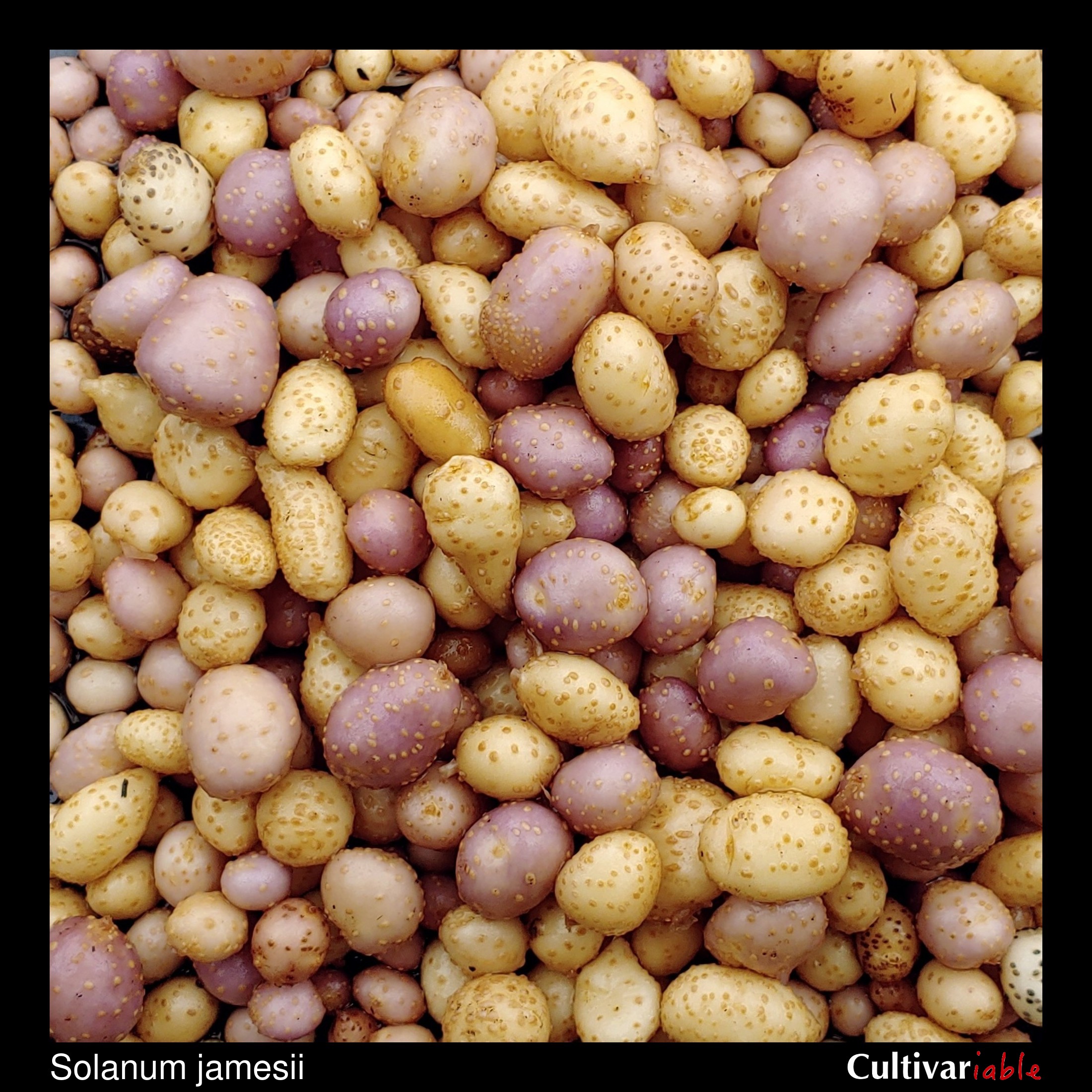
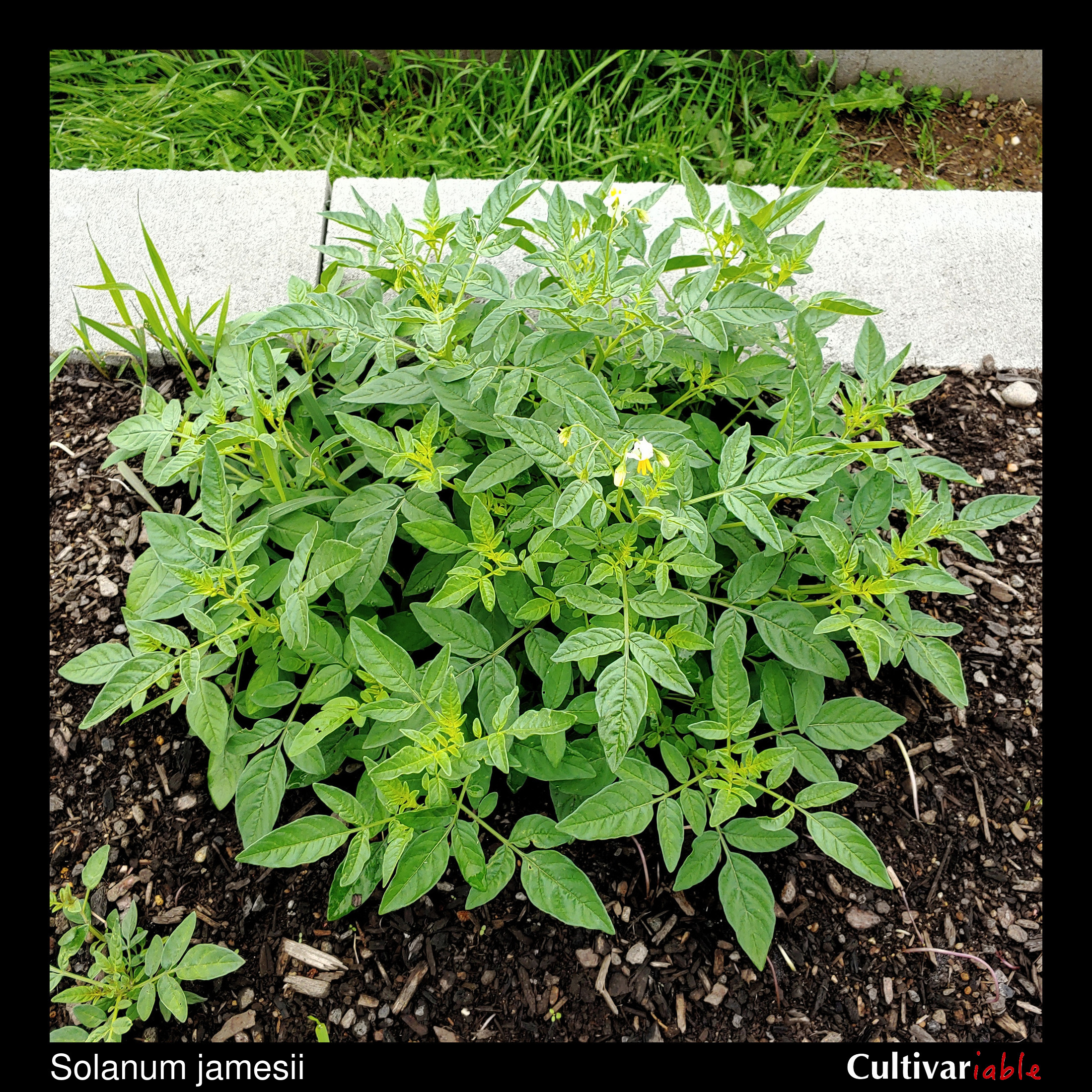
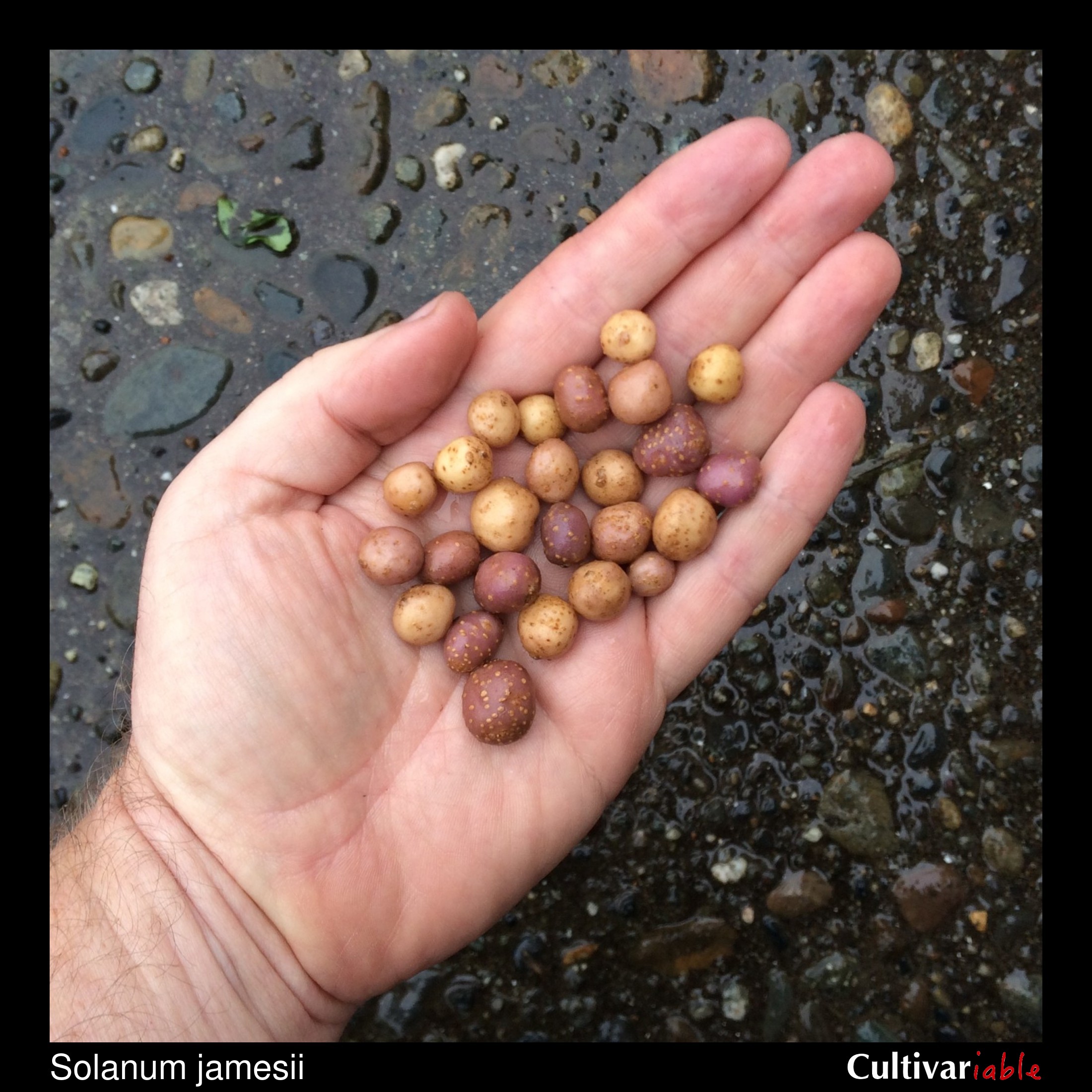
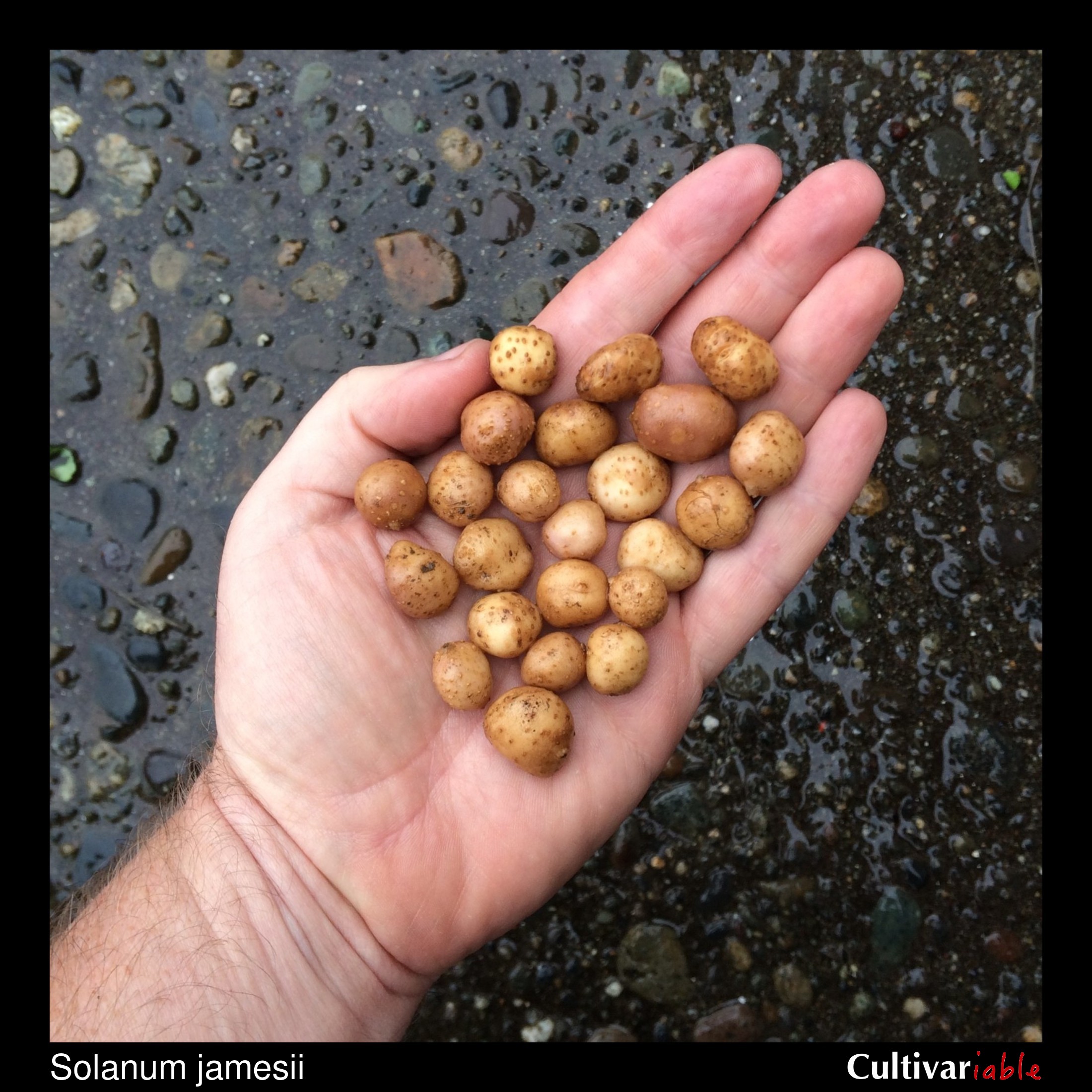
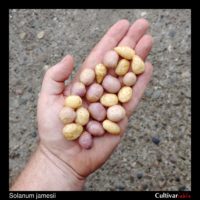
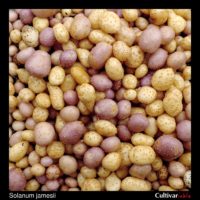
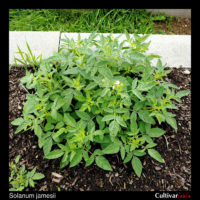
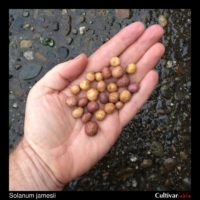
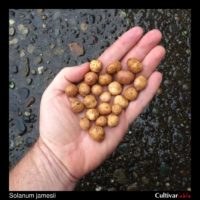
Reviews
There are no reviews yet.